Viewing Chinese Calligraphy from the Psychology of Art
Calligraphy is an art form unique to China. Other ethnicities may possess characters or characters of fine arts; they do not have “calligraphy.” The “calligrapher” is unheard of in other ethnicities nor is there any person in other ethnicities who has gained a reputation by being competent with calligraphy. “Calligraphy” is the technique and rules for writing. These rules are not established by a certain person but are commonly agreed upon, being a consensus on aesthetic of human. Apart from appreciating the importance of calligraphy through its cultural content, we can explain calligraphy in terms of the psychology of art. According to an analysis of Gestalt psychology, Chinese calligraphy fulfills humans’ psychological appeal(for images), therefore, it can become a topic for long-term evaluation.
1.Symmetry
Seal characters in Chinese calligraphy require great symmetry in the characters’ formation. According to Gestalt psychology, symmetry can bring a sense of ease to people.
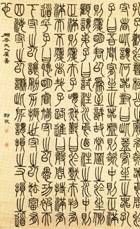 |
Deng Shiru‧Cursive Script |
2.Balance
Experiments prove that in physics, a level line appears visually higher on the left and lower on the right or concave in the middle. To make a level line visually, a stroke must appear higher on the left and lower on the right, or, the middle be a curved line appearing slightly convex. “Silkworm head and wild goose tail” and the convex horizontal line in clerical script is a curved line appearing slightly lower on the left and slightly higher on the right, which delivers a sense of balance.
 Silkworm Head and Wild Goose Tail |
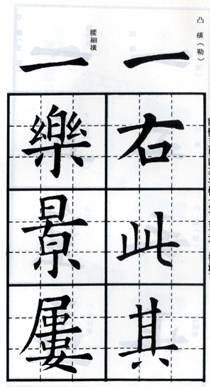 |
|
| 腰細橫 | 凸橫 | |
3.Simplicity and Complexity
A simple and perfect picture gives people a feeling of comfort and happiness, like the regular script and characters of fine art for Chinese characters as well as most phonographic characters in the world. Simultaneously, the aesthetic progress of these pictures is also simplified. However, pictures of an irregular pattern can easily give people a feeling of tension and suffocation, an example is the cursive script in Chinese calligraphy. Nevertheless, they intensify the tension of aesthetic activities, making its viewing more memorable.
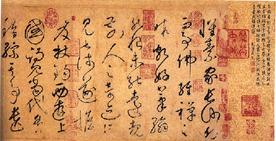 |
Huai Su‧Calligraphy on Autobiography |
4.Completeness and Incompleteness
When art development reaches an advanced stage, it changes from being a complete form to an incomplete form where an extant piece of void is left, allowing appreciators to use their own imagination to fill the “void”. It is because the most beautiful art work always exists in people’s minds. The incompleteness in form of the extant void in Chinese calligraphy, and even the statute of Venus with a broken-arm, which is one of the “three treasures of Louvre”, indeed allows appreciators to use their own cognition to interpret the work during the aesthetic process. “Lingering threads and foiling shades”, “flying white” and “withering brushes” can achieve a maximum effect by using the least. “Incomplete” calligraphy is unique to Chinese calligraphy.
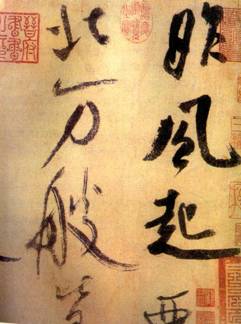 |
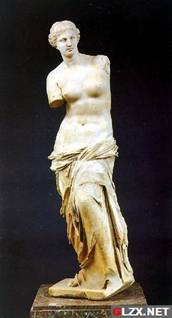 |
||
| Mi Fu‧Poem of the boat on River Wu | Statute of Venus with a broken-arm |



